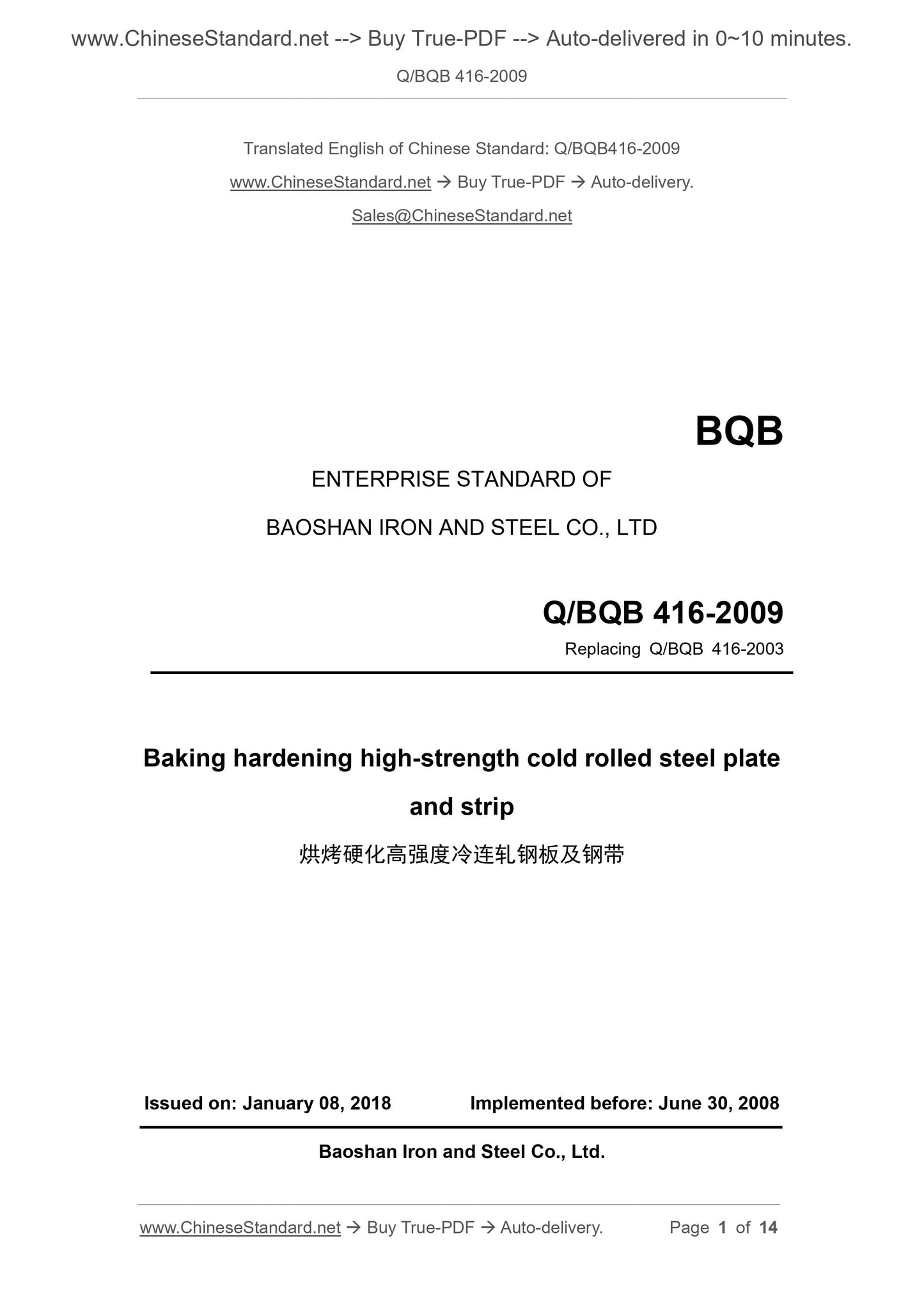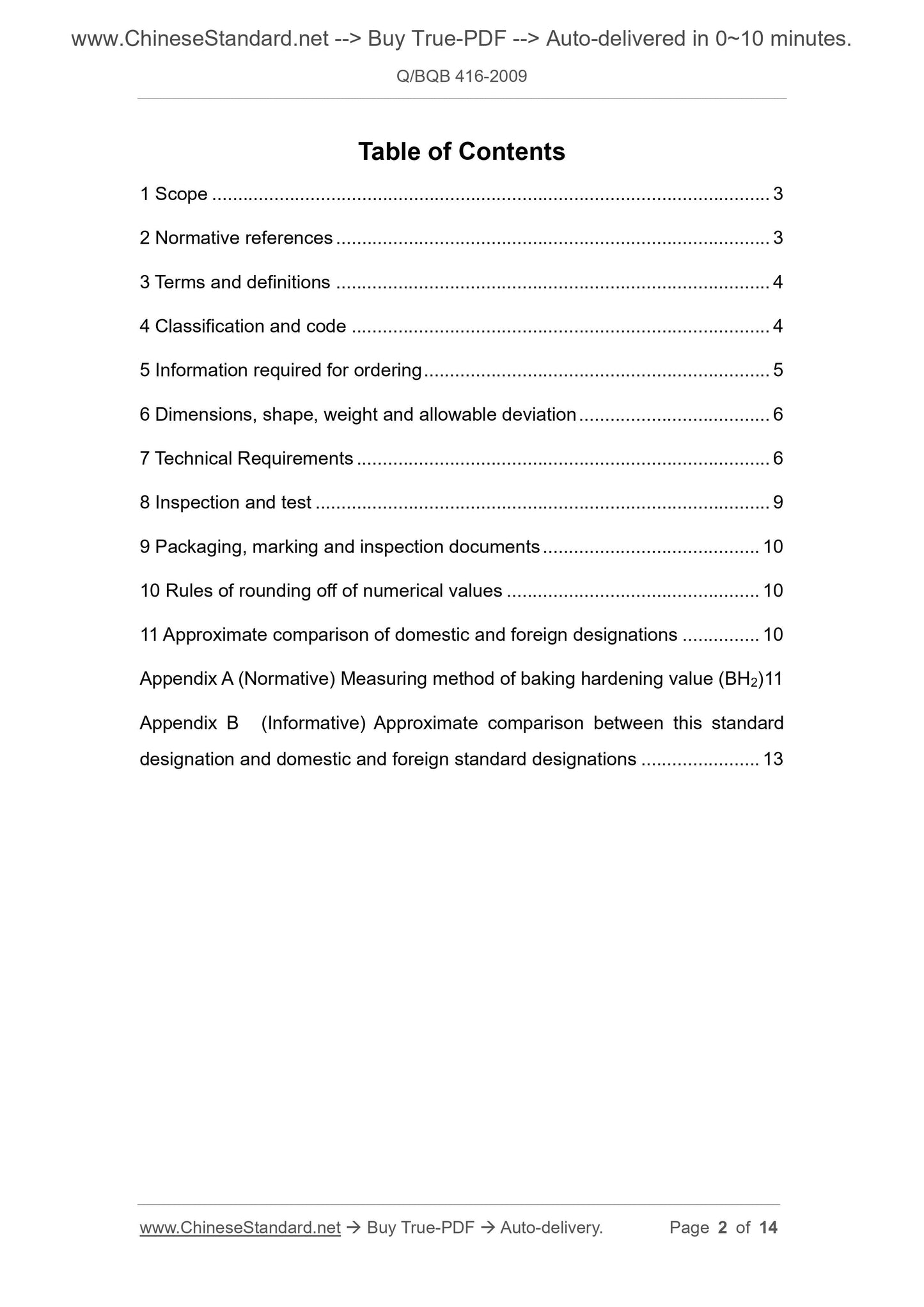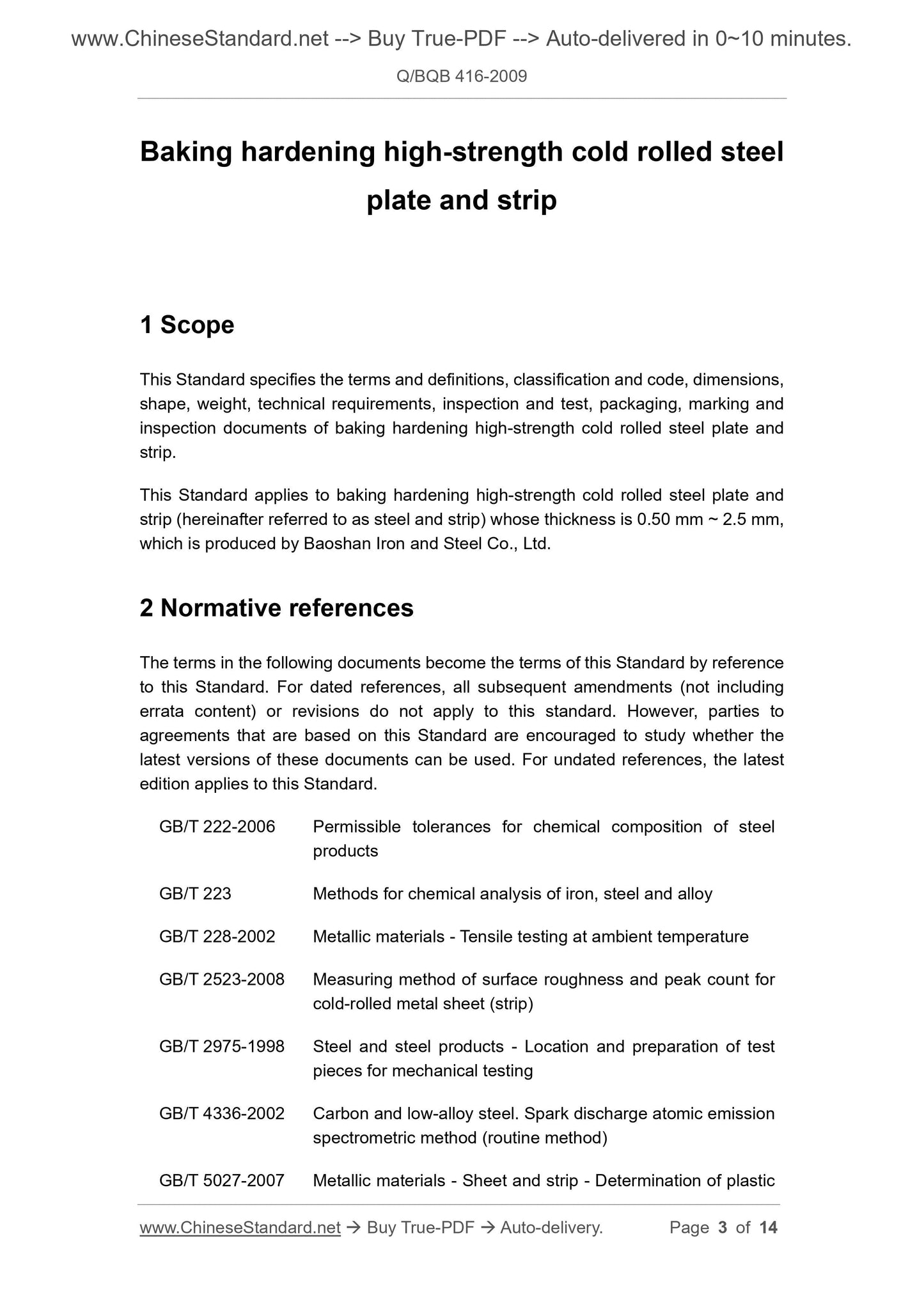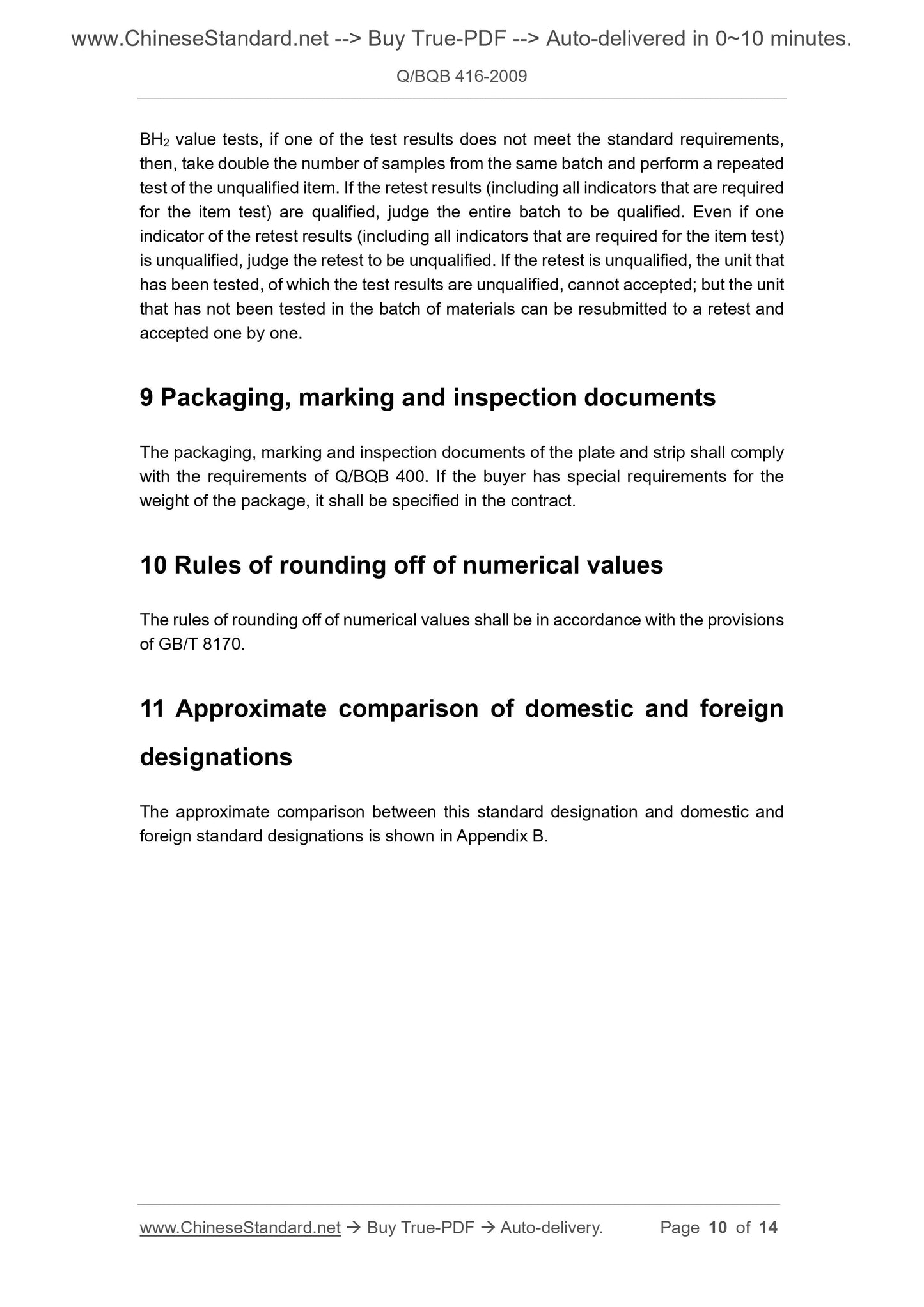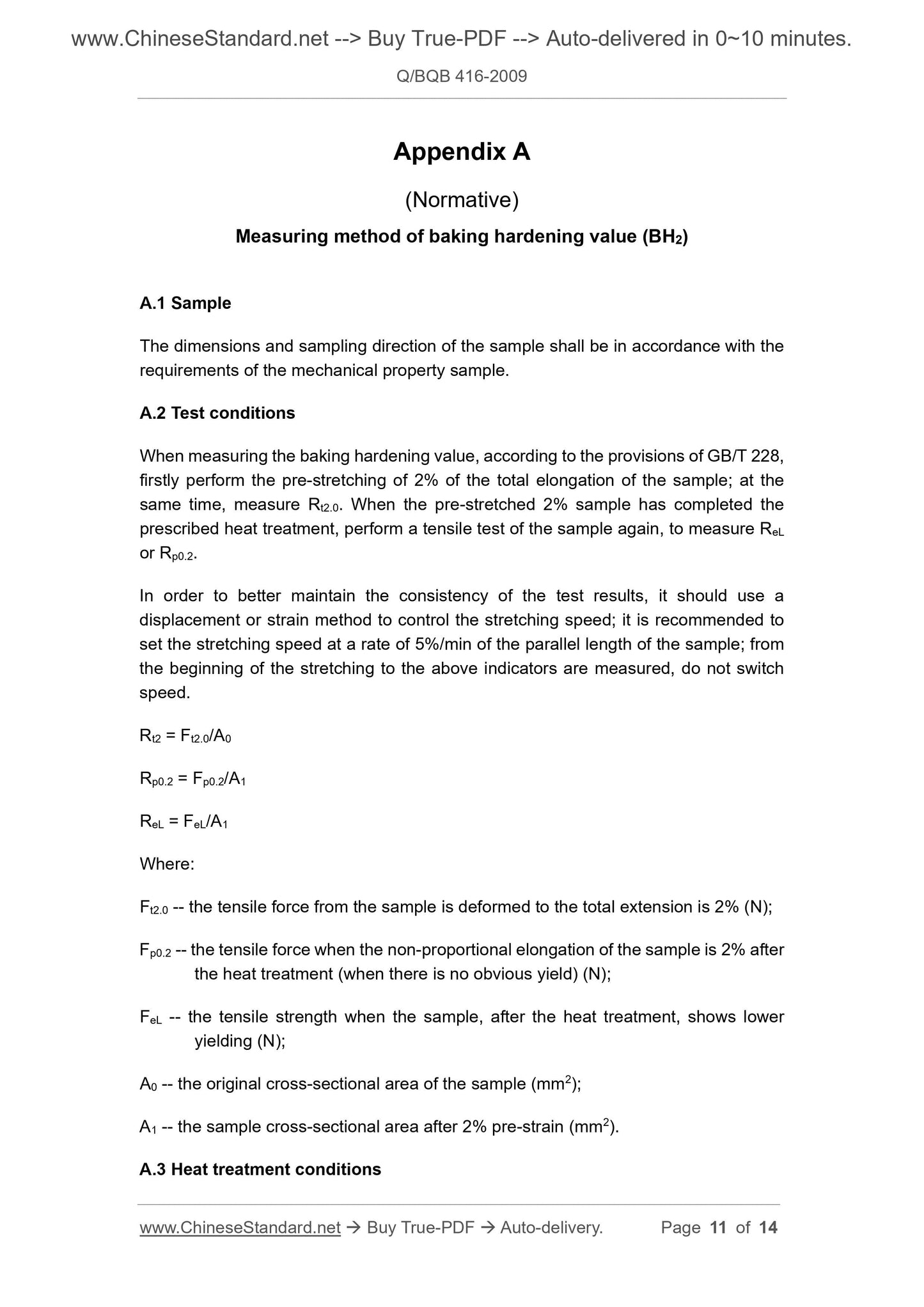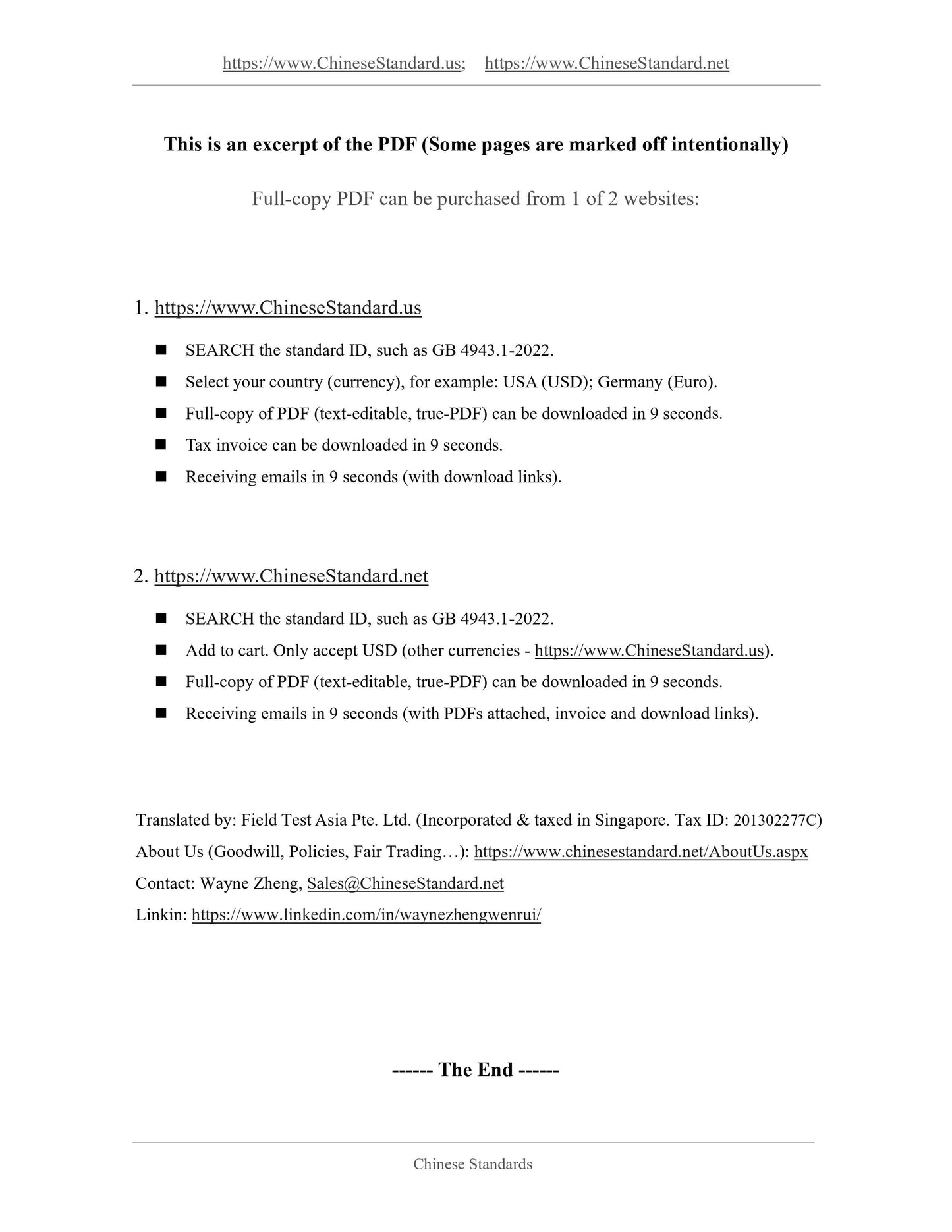1
/
of
6
www.ChineseStandard.us -- Field Test Asia Pte. Ltd.
Q/BQB 416-2009 English PDF (Q/BQB416-2009)
Q/BQB 416-2009 English PDF (Q/BQB416-2009)
Regular price
$220.00
Regular price
Sale price
$220.00
Unit price
/
per
Shipping calculated at checkout.
Couldn't load pickup availability
Q/BQB 416-2009: Baking hardening high-strength cold rolled steel plate and strip
Delivery: 9 seconds. Download (and Email) true-PDF + Invoice.Get Quotation: Click Q/BQB 416-2009 (Self-service in 1-minute)
Newer / historical versions: Q/BQB 416-2009
Preview True-PDF
Scope
This Standard specifies the terms and definitions, classification and code, dimensions,shape, weight, technical requirements, inspection and test, packaging, marking and
inspection documents of baking hardening high-strength cold rolled steel plate and
strip.
This Standard applies to baking hardening high-strength cold rolled steel plate and
strip (hereinafter referred to as steel and strip) whose thickness is 0.50 mm ~ 2.5 mm,
which is produced by Baoshan Iron and Steel Co., Ltd.
Basic Data
| Standard_ID | Q/BQB 416-2009 (Q/BQB416-2009; QBQB 416-2009; QBQB416-2009) |
| Description (Translated English) | Baking hardening high-strength cold rolled steel plate and strip |
| Sector / Industry | Chinese Industry Standard |
| Word Count Estimation | 6,000 |
| Drafting Organization | BaoSteel Group |
| Administrative Organization | BaoSteel Group |
Share
